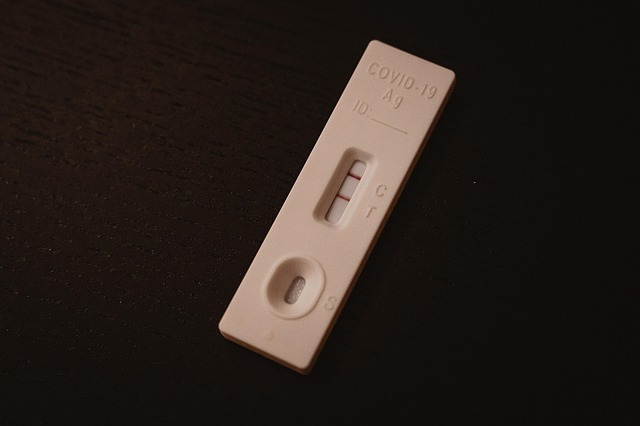In the UK, kidney blood tests are crucial for diagnosing iron deficiency anemia, a common blood disorder. These tests measure key markers like hemoglobin and ferritin, along with creatinine levels and erythrocyte abnormalities, to detect anemia and guide treatment decisions, which may include dietary changes or medical interventions. Interpretations of hemoglobin (Hb), haematocrit (Hct), and mean corpuscular volume (MCV) values help doctors determine the type of anemia (microcytic vs. macrocytic) and recommend appropriate treatments.
Iron deficiency anemia is a common yet serious health condition characterized by low levels of healthy red blood cells, leading to fatigue and other symptoms. While various factors contribute to its development, kidney blood tests play a pivotal role in diagnosing this issue within the UK healthcare system. This article delves into understanding iron deficiency anemia, focusing on the specific role of kidney blood tests, commonly used to check for iron levels and identify potential deficiencies in the UK.
- Understanding Iron Deficiency Anemia and its Symptoms
- The Role of Kidney Blood Tests in Diagnosing Iron Deficiency Anemia in the UK
- Interpreting Results: What Do the Numbers Mean?
Understanding Iron Deficiency Anemia and its Symptoms
Iron deficiency anemia is a common blood disorder where the body doesn’t have enough healthy red blood cells to carry adequate oxygen to all parts of the body. This condition occurs when there’s a lack of iron, an essential mineral that plays a crucial role in producing hemoglobin, the protein in red blood cells responsible for transporting oxygen. Symptoms can range from mild to severe and may include fatigue, weakness, pale skin, shortness of breath, dizziness, and headaches. If left untreated, it can lead to more serious complications.
In the UK, one of the primary diagnostic tools for iron deficiency anemia is a kidney blood test. This test measures the levels of certain substances in the blood, including hemoglobin and ferritin (a protein that stores iron). A low hemoglobin level can indicate anemia, while ferritin levels can help determine the cause, as low ferritin suggests iron deficiency. Early detection through these simple blood tests is vital, allowing for prompt treatment with dietary changes, supplements, or in some cases, medical interventions to prevent further health issues.
The Role of Kidney Blood Tests in Diagnosing Iron Deficiency Anemia in the UK
In the UK, kidney blood tests play a crucial role in diagnosing iron deficiency anemia. These tests measure the levels of specific blood components to assess the overall health of the kidneys and identify potential issues related to anemia. One key indicator is creatinine, a waste product normally filtered out by healthy kidneys. Elevated creatinine levels can suggest kidney dysfunction, which is often associated with anemia, as the kidneys play a vital role in maintaining iron balance in the body.
Additionally, kidney blood tests may check for erythrocyte (red blood cell) size and shape abnormalities. Iron deficiency anemia typically results in smaller-than-normal red blood cells, known as microcytosis. By examining these cells under a microscope, healthcare professionals can gather further evidence of iron deficiency and its potential impact on kidney function. These tests are essential tools for accurately diagnosing and managing iron deficiency anemia in the UK population.
Interpreting Results: What Do the Numbers Mean?
Interpreting your kidney blood test results is crucial in understanding your iron deficiency anemia diagnosis. The key numbers to focus on are haemoglobin (Hb) and haematocrit (Hct). Haemoglobin is a protein in red blood cells that carries oxygen around your body. A low Hb level indicates anemia, with the normal range typically being between 13.5-17.5g/dL for women and 14.0-18.0g/dL for men (in the UK). Haematocrit is the percentage of your blood that consists of red blood cells; a low Hct suggests reduced red blood cell production or increased plasma volume.
Your test results will also include the mean corpuscular volume (MCV), which measures the average size of your red blood cells. A high MCV often indicates macrocytic anemia, potentially caused by deficiencies in vitamin B12 or folate. In contrast, a low MCV suggests microcytic anemia, commonly associated with iron deficiency. These values combined provide vital insights into the type and severity of your anemia, guiding doctors in recommending appropriate treatments such as dietary changes, supplements, or blood transfusions (if severe).
Iron deficiency anemia is a common yet treatable condition, and kidney blood tests play a crucial role in its diagnosis within the UK. These comprehensive assessments help healthcare professionals interpret iron levels, enabling them to make informed decisions about patient care. By understanding the results of these tests, individuals can take proactive steps towards managing their health effectively. For those concerned about potential iron deficiency, consulting with a medical expert and undergoing simple blood analysis can provide valuable insights into maintaining optimal well-being.
